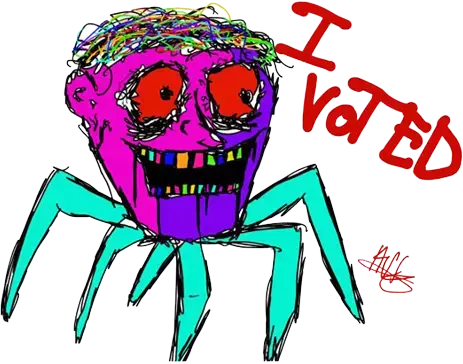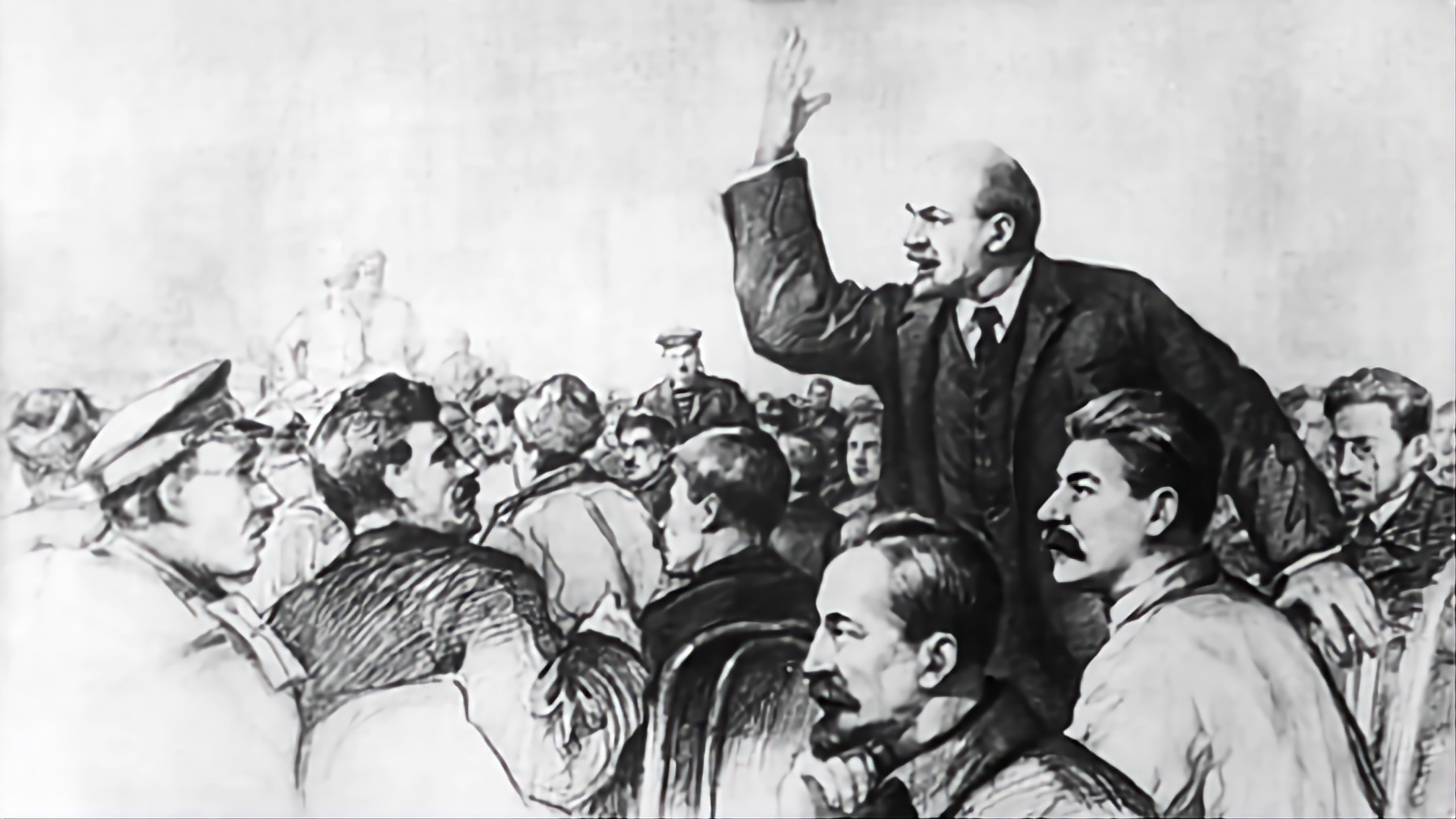Damn, it’s almost like literal children don’t always pay attention.
EthicalHumanMeat [he/him]
- 0 Posts
- 16 Comments

 1·3 years ago
1·3 years agoCentrally planned bedtimes.

 0·3 years ago
0·3 years agoI would like to add that less consumption isn’t necessarily a lower standard of living and could be the opposite if people’s basic needs are actually guaranteed and they’re subject to less abusive conditions than under capitalism.
Sure, why not.

 0·3 years ago
0·3 years agoBut I though jeans were banned in the DPRK? :thonk:

 0·3 years ago
0·3 years agoIn no particular order:
In the Pale Moonlight
Bar Association
It’s Only a Paper Moon
Far Beyond the Stars
The Wire

 1·3 years ago
1·3 years agonot drinking coffee means you are a socdem im sorry
How dare you. Tea is far superior.
As the most widely consumed drink in the world, it is clearly the beverage of the global proletariat.

 0·4 years ago
0·4 years agoBring back downvotes.

 1·4 years ago
1·4 years agoTime to dust off an old post I made about this guy. He was still majorly wrong in important ways, but like most things involving the USSR, the story we’re told isn’t very accurate. He wasn’t just a dumb pseudoscientist who killed eveyone who disagreed with him:
Lysenko is actually pretty misrepresented in the West. He wasn’t, like, totally opposed to Mendelian genetics or Darwinian evolution. He believed that some acquired traits were heritable, and while he was wrong about what traits, exactly, could be inherited, he was broadly correct. Hence, you know, epigenetics. This is especially true of plants, which can pass on acquired traits to multiple successive generations (not so much in animals). He did good work as a plant physiologist before he got into genetics, being the first to describe vernalization. Then things got out of control, mostly because of a lack of formal scientific education among the government and general public, and also Lysenko lacking a rigorous scientific background himself (coming from a poor peasant background):
To sum up briefly: Lysenko’s vernalization was received by the agricultural specialists as a very interesting and promising method that deserved intensive investigations. He had made a fruitful impact on research in plant physiology though his experiments were sloppy, his theoretical explanations were disputed, and the real usefulness of his practical proposals was still unproved. But the general public, including political leaders, did not see the crucial difference between an idea being accepted as a fruitful working hypothesis and its being taken to be an established scientific fact. The methodological revolution that was believed to have taken place paralysed traditional means of scientific criticism.
If Lysenko’s tests for vernalization were so poor, why was the method not criticized and rejected by agricultural experts? There can be no doubt that they saw the inadequacy of Lysenko’s evidence. As Joravsky has pointed out this was a time when many wild methods were tried in Soviet agriculture. 33 Furthermore, there had been the cultural revolution. Bourgeois specialists had learned to be careful about what they said, and they were aware that traditional scientific arguments were not necessarily listened to by officials and the public. They were biding their time, trusting that new experiments would sort the wheat from the chaff in Lysenko’s ideas. It was widely felt that vernalization was a promising method, and possibly Lysenko was on the right track with his hasty applications. Under the circumstances it was best not to risk one’s neck with precipitous criticism.
But criticism did eventually come–and it was effective. In 1936, the plant breeders P. N. Konstantinov and I. P. Lisitsyn led the attack. In numerous articles and lectures they argued that the method of vernalizing seed grain had not yet been worked out in sufficent detail or properly tested. The results in a particular region depended very much on choosing the right procedures and the right varieties. With the crude guidelines so far given the outcome would sometimes be positive and sometimes negative. The defects of Lysenko’s method of evaluating the results of vernalization were clearly pointed out. 34’ 35 Lysenko tried to disarm Konstantinov by labelling him a bourgeois specialist, but in the end he reluctantly admitted that the method was not properly developed and tested for all circumstances. 36 After this the vernalization of spring grain was apparently quietly dropped. 37 But Lysenko’s public reputation had already been made through the propaganda for his method in the mass media. The criticism does not seem to have had much impact outside the narrow circle of agricultural specialists. Even Soviet biologists continued to take Lysenko’s practical achievements in vernalization for granted, at least in public discussions.
It should also go without saying that the idea that he was personally responsible for starving tens of millions of people in the USSR and China is also complete bullshit.
Here’s a whole thing that puts him in the proper context:
spoiler
We read with great interest the recent article ‘Some pioneers of European human genetics’ by Peter Harper.1 This comprehensive review is very informative and highly appreciated. But a somewhat misleading statement needs to be reconsidered. Harper regarded Lysenko as a fraudulent agronomist. We disagree with him on this fundamental point. We are thinking that he was greatly misled by Medvedev’s book, The Rise and Fall of TD Lysenko,2 which he cited in his article. It should be noted that there are many misleading statements in this book. For example, in chapter 8, Medvedev argued against the validity of Lysenko’s work on plant graft hybridization, and pointed out that ‘serious and precise experiments by many scientists have failed to prove the possibility of transfer of hereditary stable properties from stock to scion’,2 thus regarding graft hybridization as Lysenko’s fraud. To our knowledge, it is Darwin who put forward the concept of graft hybridization. He described many cases of graft hybrids, and considered it to be special importance for understanding the mechanism of inheritance and variation. Later, Michurin invented the so-called ‘mentor-grafting’ method, which greatly enhanced the induction of graft hybrids. Lysenko not only recognized the existence of graft hybrids, but also applied the method of graft hybridization to the practice of plant breeding. Over the past several decades, extensive experiments on graft hybridization have been carried out and numbers of new crops and varieties were developed by grafting, indicating that graft-induced variant characteristics were stable and inheritable.3 Now it has been proposed that graft hybridization may serve as a mechanism of horizontal (or lateral) gene transfer. Thus, it is not proper to continue to regard Lysenko as a fraudulent agronomist.
Harper considered the inheritance of acquired characteristics as the defining feature of Lysenkoism, and referred to it as false science.1 Actually, the inheritance of acquired characters has been the subject of passionate debate and heated controversy since the days of Lamarck. Even Darwin accepted the Lamarckian inheritance of acquired characteristics as an established fact, and had assumed that it was of importance in evolution.4 He considered natural selection, the inheritance of acquired characteristics and mutation as three factors influencing evolution. It is true that Lysenko was a keen supporter of the inheritance of acquired characteristics. He claimed that the environmentally induced changes were transmitted to the progeny by demonstration of the conversion of spring wheat into winter wheat and vice versa. In recent years, there has been a substantial body of reliable experimental evidence for the inheritance of acquired characteristics.4, 5 Lysenko’s work on the conversion of spring wheat into winter wheat can be explained by transgenerational epigenetic inheritance.6 Now it seems that Lysenko was not wrong in believing the inheritance of acquired characteristics.
Harper also mentioned Lysenko’s errors and crimes, as well as the death of numerous researchers in genetics.1 The impression which one gets from reading this paragraph is that Lysenko was responsible for the death of these geneticists. We fear that this view is too one-sided and not supported by historical evidence. It is true that Lysenko disputed with Vavilov and many other geneticists on some genetic viewpoints. But we must know that Lysenko was a leading Soviet scientist in agriculture and genetics. He was not the NKVD chief, thus he had no power to arrest geneticists. Lysenko himself repeatedly maintained that he was not personally responsible for Vavilov’s arrest and death. He recalled that the investigator of Vavilov had come to see him and asked: ‘What can you say in general about the wrecking (spying, counterrevolutionary) activities of Vavilov?’ Lysenko replied: ‘There were and are some differences of opinion on scientific matters between myself and Vavilov, but I have no knowledge of any wrecking activities of Vavilov’.7 In addition, Haldane, one of the towering figures of twentieth century biology, also denied that Lysenko had been responsible for Vavilov’s arrest and death.8
It is not our intention to minimize Lysenko’s mistakes and to exalt his contributions, but we must try to see things in their right proportion. Actually, some of Lysenko’s work had a certain scientific merit, which was recognized internationally. For example, it was Lysenko who coined the term vernalization, which is now still an extant scientific term and frequently appears in Nature, Science, Cell and many prestigious journals. In addition, some of Lysenko’s work was highly praised by world-famous scientists. For example, in early 1930s, Vavilov repeatedly place a high value on Lysenko’s contributions to science and agricultural production. As he said, ‘Lysenko is a careful and highly talented researcher. His experiments are irreproachable’.9 In 1964, Haldane made an objective comment: ‘In my opinion, Lysenko is a very fine biologist and some of his ideas are right’.10 Of course, we also recognize that some of Lysenko’s ideas were wrong and badly wrong. His biggest mistake was mixing science and politics. He regarded Mendelian genetics as ‘bourgeois science’ and forced Soviet geneticists to accept Michurinism, for which he got a bad reputation.

 1·4 years ago
1·4 years agoI remember reading about how they were involved in Cold War, or maybe hearing about it on Citations Needed or something, but I don’t remember the details.

 0·4 years ago
0·4 years agoThis bothers me so much more than the presidential election.

 11·4 years ago
11·4 years agoIt’s because the vast majority of the criticisms of China and Xi Jinping are unsubstantiated horseshit, because condemning China when the US is increasingly antagonizing them is reinforcing imperialist propaganda, and because Reddit and every other damn website is constantly frothing at the mouth over how much they hate China, which a lot of us are sick of.
And what do you mean by “brigading”? That implies that it’s being coordinated.

 1·4 years ago
1·4 years agoInadequate use of crop rotation and particularly bad weather:
Ukraine was affected particularly badly by the expansion of the sown area. It already had a much lower level of uncropped arable than in all other regions of the USSR, with the exception of the highly commercial Leningrad region. According to the planning documents, the Ukrainian level of fallow was equal to 27.7 per cent of the sown area in 1927/28, and was projected to fall to 18.1 per cent in 1932/33.137 The USSR average was 59.1 per cent, projected to fall to 41.7 per cent. An external factor considerably complicated the situation in Ukraine. Bad weather led to exceptionally large winter killings of the autumn sowings for both the 1928 and 1929 harvests, and, to compensate for these, spring sowing was considerably increased. By 1929, rational crop rotation had been seriously undermined; and the increase in the sown area in 1930 and 1931 squeezed the fallow land still further.
Throughout the USSR, the reorganisation of the land, and the expansion of the sown area, disrupted the traditional arrangements for the cultivation of the soil, but for several years they were not replaced by an improved cropping system.
It was not until the autumn of 1932 that the restoration of proper crop rotation received the strong support of the authorities (see pp. 231–4). Meanwhile, much damage had been done. Such a dramatic expansion of sown area and reduction of fallow, without improved crop rotation and the careful introduction of alternative means for rejuvenating the soil with fertilisers or manure, was bound to lead to the reduction of yields and an increased likelihood of crop diseases. By 1932, in many regions, and particularly in Ukraine, soil exhaustion and crop diseases were widespread.

 1·4 years ago
1·4 years agoThe Kulaks (who, yes, were monsters and did engage in sabotage in the past) didn’t actually have much to do with the famine in the 30s, as they had already been pretty much completely eliminated by that point. Conquest is citing the official statements of the USSR, who blamed the agricultural shortfall on the Kulaks, but the Soviet archives show that the cause was much more complex than that.
Davies and Wheatcroft, in The Years of Hunger: Soviet Agriculture, 1931-1933, explain them. It’s hard for me to summarize all of it and the relevant section is only like twenty pages, so please read “(E) CAUSES OF THE FAMINE”.
The gist is that planning had overestimated grain yields based on overly optimistic predictions of improvements on previous years’ yields. Grain was exported under the assumption that the leftover surplus would be sufficient, but it wasn’t. Drought during the growing season and heavy rainfall during the harvesting seasons resulted in low output and high spoilage, meaning much less grain was produced than expected.
The reduction in livestock from 1928 was a product of diverting grain from feed in the countryside to urban population centers. In order to survive capitalist onslaught and develop out of Medieval poverty, the USSR needed to industrialize rapidly, which meant more food for the industrial workers. However, they took too much grain from the countryside to maintain their draught animals, which, coupled with the bad weather, resulted in much lower yields than planned.
When it became clear that a famine was occurring, the USSR did everything in its power to minimize starvation, and Stalin personally pressed for more grain to be reallocated to the countryside. However, the rapidly industrializing urban centers were prioritized, for good reason.
The people who starved were the farmers, mostly in Ukraine, but this wasn’t an attempt at ethnic cleansing. Meanwhile, the party used the Kulaks as a scapegoat, even though they didn’t really exist at that point. And, honestly, I think that was the right call; they couldn’t have just said, “hey, the weather was bad and also we kind of fucked up and that’s why you’re starving to death”, and expected to still have the support of the people. The authors describe this overall response as “ruthless and brutal”, an example of a “genuflection to orthodoxy” as Parenti puts it; even though they’re in the process of dismantling the narrative of Stalin being a brutal, malicious dictator, they still aren’t willing to fully break from it.



This has been known for more than a decade (this study is just a review of existing research), and is not directly related to the efficacy of SSRIs (although the serotonin “theory” might have led to their adoption, idk).
For a while now, as I understand it, the view has been that SSRIs cause the downregulation (decreased new production of) serotonin receptors in reaction to the excess serotonin buildup they cause in the synapses (this is why they take a few weeks to kick in, despite increasing serotonin levels almost immediately, and is also why they will desensitive you to psychedelics like LSD, which act primarily on serotonin receptors). They decrease overall serotonin signalling, which in turn has downstream effects that alter certain activites of certain regions of the brain that are implicated in depression. (This is based mostly on discussions I had with my psychiatrist a few months ago, so if there are any actual experts here, correct me if I’m wrong.)
That being said, SSRIs suck ass, their side effects are awful, and I think it’s medical malpractice to make them a first-line treatment tbh. It’s really mind-boggling that they’re the go-to given how much shit they fuck up.